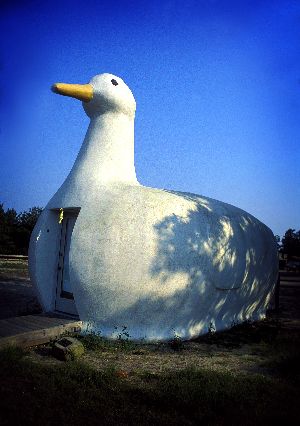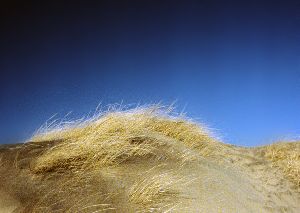PROFILE OF SUFFOLK COUNTY
Suffolk County comprises 1000 square miles of eastern two-thirds of Long Island. Long Island itself extends 120 miles into the Atlantic Ocean, East from New York City. The distance from the Nassau County border to Montauk Point is 86 miles. At Suffolk County's widest point the distance from Long Island Sound to the southern shore is 26 miles.
Long Island was formed during the Pleistocene Era when the earth warmed and the massive glaciers then covering the area melted, leaving glacial moraines of rock and soil deposits which shaped the island. Extending back 10,000 years and up to the 17th century, the island was inhabited by numerous small groups of Algonquins having a language and culture throughout the Middle Atlantic region and what is now New England. Historians estimate the native population to have been no more than 6,000 (In 1994 there were approximately 1,400,000 residents of Suffolk.) The Algonquins fished and harvested shellfish at the shore and hunted the inland wilderness. From clam shells and whelk they chiseled wampum, the currency of eastern natives and, in the 17th century, adopted as money by colonists.
The Dutchman, Adrian Block, the first explorer to touch land at Montauk point in 1614, encountered native Americans. The first white resident was Lion Gardiner, who settled in 1639 on the Island between the north and south forks. Gardiner's Island still bears his family name.

English colonists crossed Long Island Sound from Connecticut and Massachusetts colonies, founding Southold and southampton (1640), East Hampton (1648), Shelter Island (1652), and Setauket, in Brookhaven (1655). Dutch settlers moved eastward from Manhattan Island. By the mid-1600s the Dutch had ceded control of eastern Long Island to the English.
In the 1670s, James, Duke of York, who owned Long Island, appointed Thomas Dongan to govern it. At a gathering of colonial representatives, the "Charter of Liberties and Privileges" was adopted (1 November 1683), establishing Suffolk county as a political entity and as one of the 12 original counties of the Province of New York, and laying the foundation for the State's present political subdivisions and governmental structure. The County was occupied by the British for the seven years of the Revolutionary War, from 1776 to 25 November 1783.
From the first years of colonization, the heavily wooded forests provided wood which Long Islanders cut and shipped as cordwood and as board footage for local ship and home builders. As the land was cleared, the rich acreage was farmed. Fishing and shipbuilding were other early industries. Until the 1850s whaling was an important source of income.

Faring remains a staple of eastern Long Island commerce, although strawberries, cabbage, potatoes, pumpkins and sod acres are giving way to horse farms and vineyards. Its quaint historic villages, rocky north shore beaches and calm waters, the white sand and breakers off Fire Island, and the dependable winds and safe harbors for sailing make tourism a major Suffolk County industry. In the 1930s the County became the site of large-scale suppliers to the U.S. defense and aerospace industries. For example, Grumman Corporation played an important role in developing high-technology jet planes, such as the Navy F14 fighter, as well as the lunar module (LEM) which first landed men on the moon in 1969. After World War I, Brookhaven National Laboratory, a research institution administered by Associated Universities Inc. and funded by the Federal Government, was established on the site of Camp Upton in Yaphank. Its scientists develop peaceful uses of atomic energy. High technology centers make Suffolk County sixth in the nation in the production of radio and television communications equipment and aircraft manufacture.
Since World War II, Long Island has epitomized the phenomenon of growing suburbia. In 1955, mass-produced housing developments, along with new major institutions of learning, contributed toSuffolk County's population explosion. Foremost among the latter is the State University of New York at Stony Brook, which opened on a 1000-acre campus in 1962. Its Health Science Center and 18-story University Hospital became Long Island's tallest buildings in 1976. For some, the Island's bucolic pleasures are offset by new problems accompanying population growth: disappearing farms replaced by housing developments, strip-zoning along once pastoral roads, dependence on the automobile, overcrowded roadways, possible effects of pollution of inland and coastal waters, and mounting waste-disposal needs.
Long Island's leading newspaper, Newsday, founded by Alicia Paterson in 1940 in Hempstead, started a Suffolk edition in 1944. The paper features investigative news coverage of local public officials and institutions, up-to-the-minute sports, and coverage of world and national affairs.